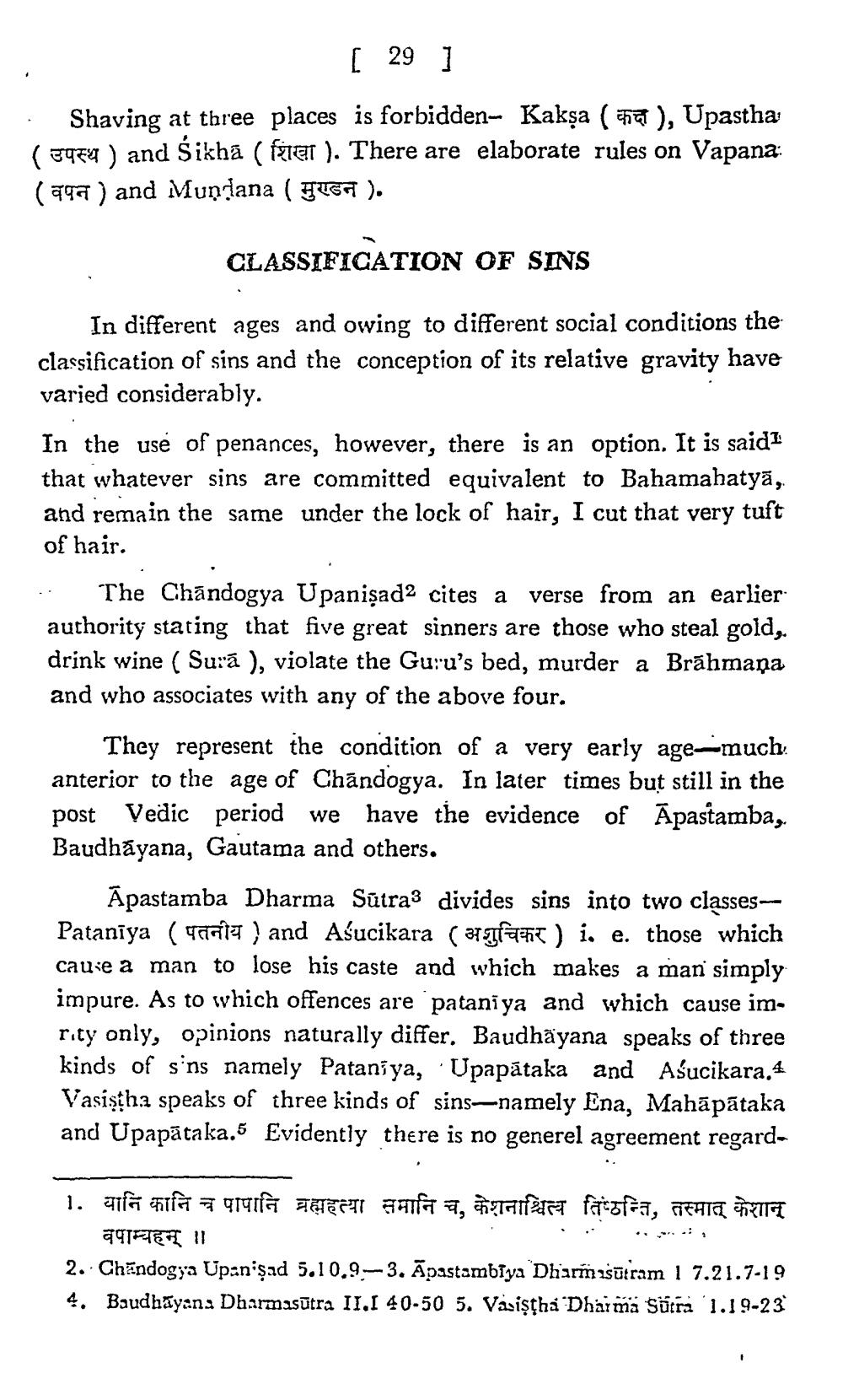________________
[ 29 ]
Shaving at three places is forbidden- Kakṣa (), Upastha (394) and Śikha (f). There are elaborate rules on Vapana: ( वपन ) and Mundana ( मुण्डन ).
CLASSIFICATION OF SINS
In different ages and owing to different social conditions the classification of sins and the conception of its relative gravity have varied considerably.
In the use of penances, however, there is an option. It is said1 that whatever sins are committed equivalent to Bahamahatyā, and remain the same under the lock of hair, I cut that very tuft of hair.
The Chandogya Upanisad2 cites a verse from an earlier authority stating that five great sinners are those who steal gold,. drink wine (Sura ), violate the Guru's bed, murder a Brāhmaṇa and who associates with any of the above four.
They represent the condition of a very early age-much anterior to the age of Chandogya. In later times but still in the post Vedic period we have the evidence of Apastamba, Baudhayana, Gautama and others.
Apastamba Dharma Sutra3 divides sins into two classesPataniya (4) and Asucikara (f) i. e. those which cause a man to lose his caste and which makes a man simply impure. As to which offences are pataniya and which cause imrity only, opinions naturally differ. Baudhayana speaks of three kinds of sins namely Pataniya, Upapataka and Aśucikara.4 Vasistha speaks of three kinds of sins-namely Ena, Mahāpātaka and Upapataka.5 Evidently there is no generel agreement regard
1. यानि कानि च पापानि ब्रह्महत्या समानि च केशनाश्चित्य तिष्ठन्ति तस्मात् केशान् वपाम्यहम् ॥
2. Chandogya Upanisad 5.10.9-3. Apastambiya Dharmasutram 1 7.21.7-19 4. Baudhayana Dharmasūtra II.I 40-50 5. Vasistha Dharma Sutra 1.19-23




